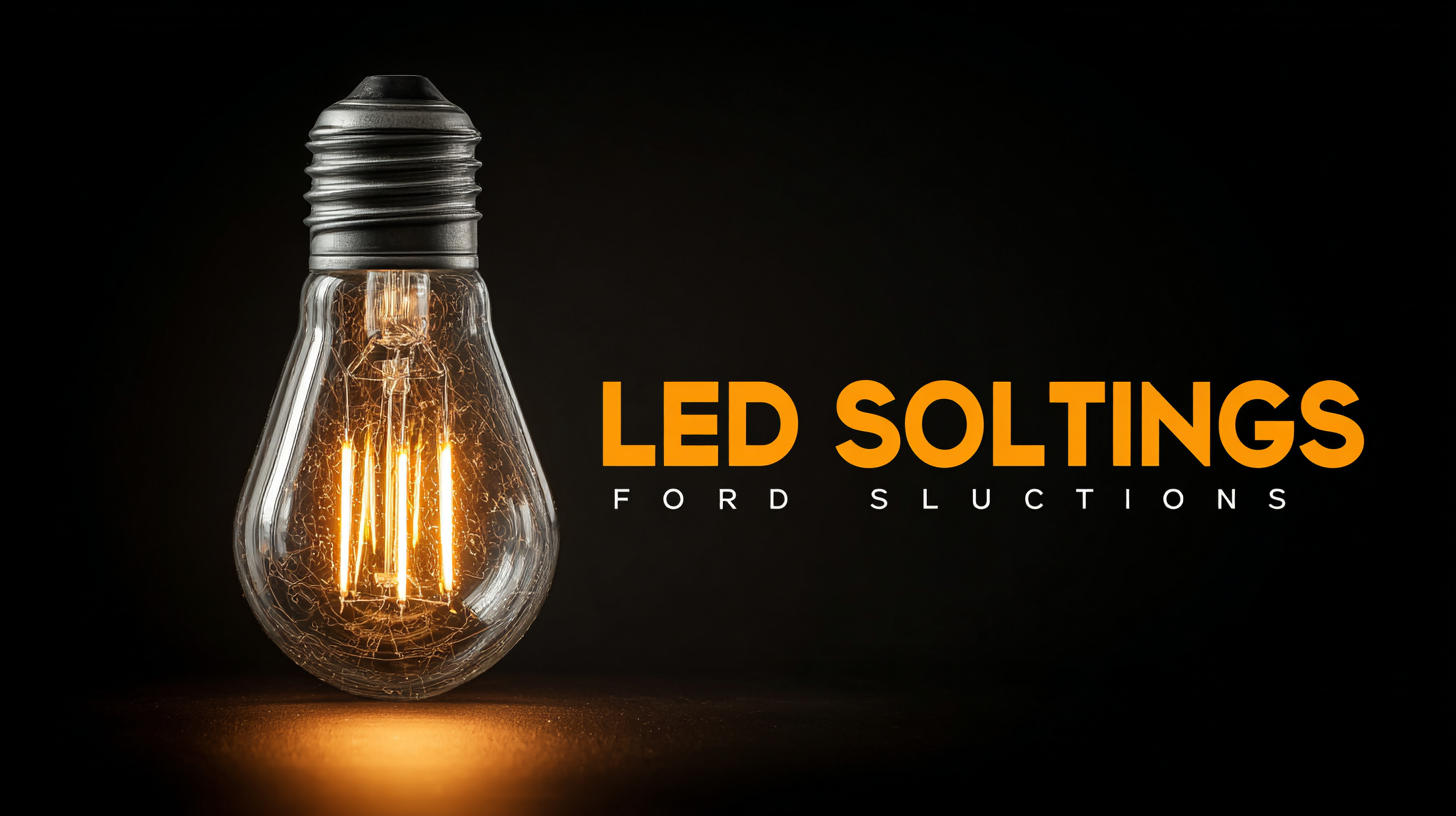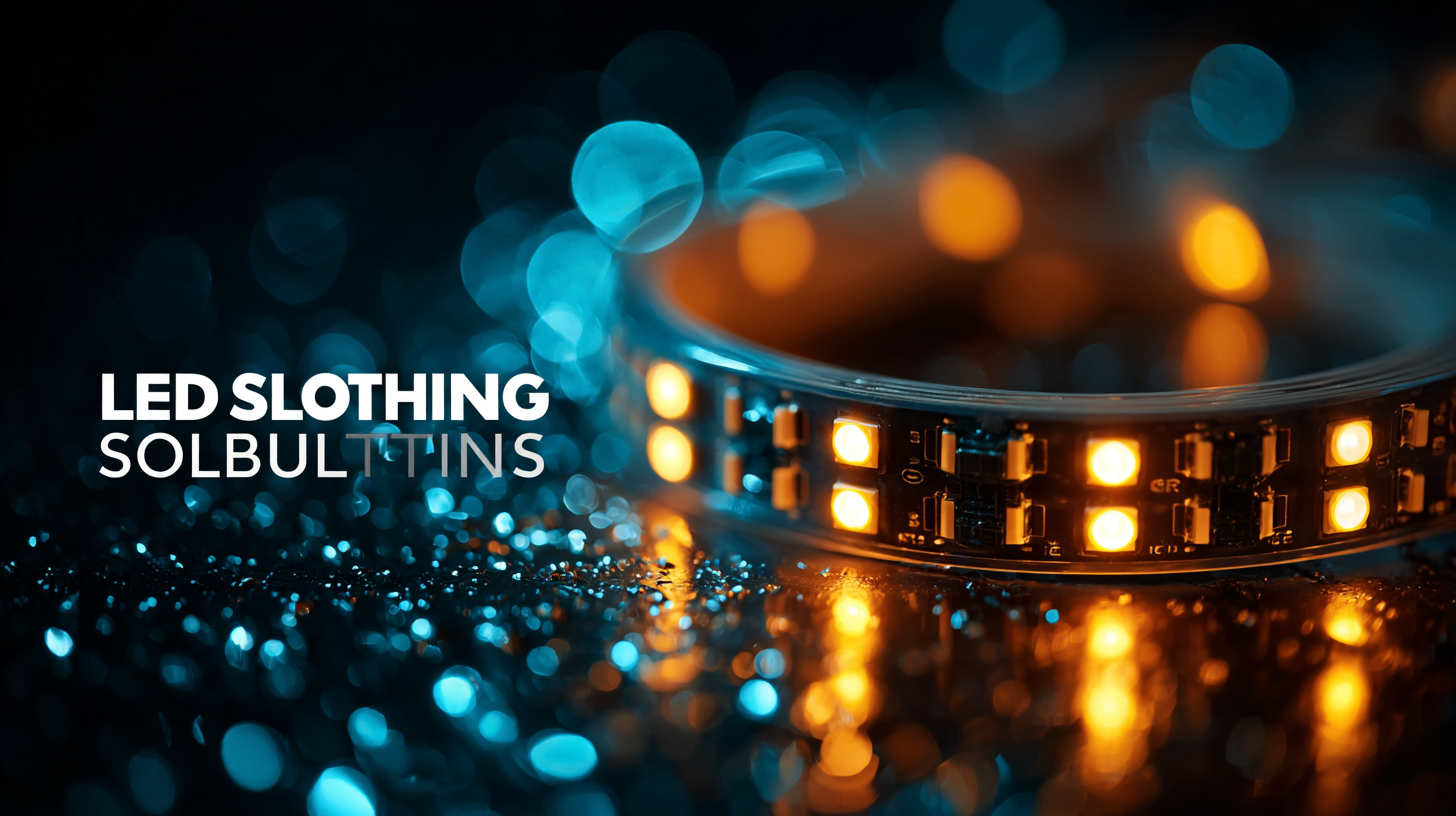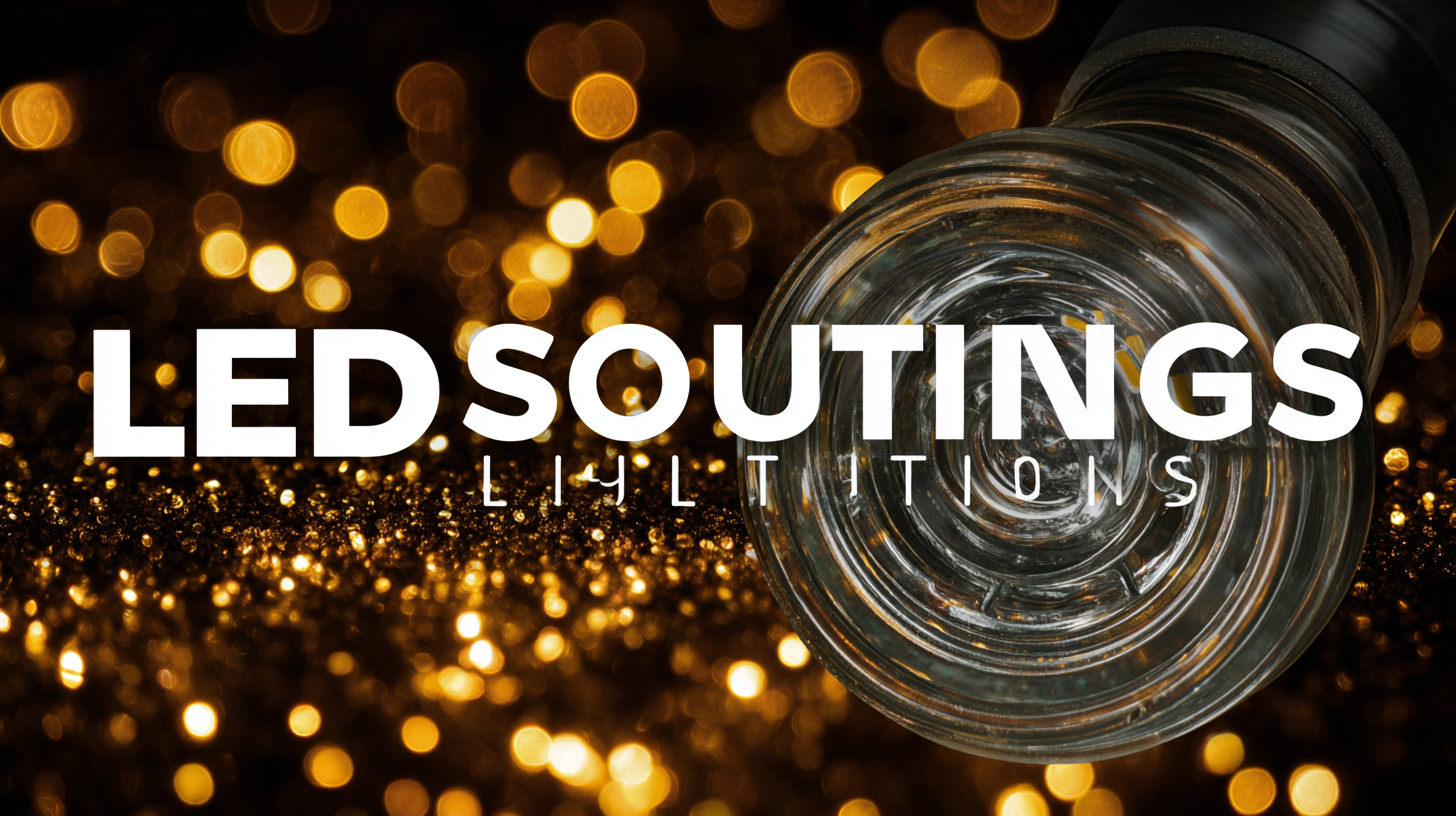Exploring the Unique Features and Applications of the Best Led Lighting Solutions
 In today's fast-paced world, the demand for energy-efficient and versatile lighting solutions has never been greater. Among the various options available, LED lighting solutions stand out due to their unique features and numerous benefits. These innovative lighting systems not only consume significantly less energy compared to traditional incandescent lights but also boast longer lifespans, making them a cost-effective choice for both residential and commercial applications.
In today's fast-paced world, the demand for energy-efficient and versatile lighting solutions has never been greater. Among the various options available, LED lighting solutions stand out due to their unique features and numerous benefits. These innovative lighting systems not only consume significantly less energy compared to traditional incandescent lights but also boast longer lifespans, making them a cost-effective choice for both residential and commercial applications.
Furthermore, the adaptability of LED technology allows for a wide range of applications, from enhancing the ambiance of a home to fulfilling the demanding requirements of industrial settings. This blog will delve into the distinct advantages of LED lighting solutions, highlighting their role in promoting sustainability and efficiency in our daily lives while exploring how they can be integrated into various environments for optimal performance.
How to Choose the Right LED Lighting for Your Space
When selecting the right LED lighting for your space, it's essential to consider several key factors that can significantly impact both the aesthetics and functionality of the environment. According to a report by the U.S. Department of Energy, LED lighting can reduce energy consumption by up to 75% compared to traditional incandescent bulbs. This not only translates to cost savings on electricity bills but also a reduced carbon footprint, making LEDs an environmentally friendly choice.
Understanding the color temperature is another critical aspect when choosing LED lights. The color temperature, measured in Kelvins (K), affects the mood and perception of the space. For instance, warm white lights (around 2700K-3000K) are typically ideal for living areas, creating a cozy atmosphere, while cooler lights (5000K and above) are better suited for workspaces, enhancing focus and productivity. The Illuminating Engineering Society recommends assessing the purpose of the room and selecting color temperatures that align with the intended use to optimize comfort and effectiveness.
How to Maximize Energy Efficiency with LED Solutions
The transition to LED lighting solutions is not only a trend but a necessity for maximizing energy efficiency. According to the U.S. Department of Energy, LED lighting can save up to 75% more energy than traditional incandescent bulbs and last 25 times longer. This shift not only reduces electricity bills but also plays a significant role in minimizing carbon footprints, making it a key consideration for environmentally conscious consumers and businesses alike.

To maximize energy efficiency with LED solutions, consider the following tips: First, make use of smart lighting controls that allow you to adjust brightness and set schedules. This can help avoid unnecessary energy use when rooms are unoccupied. Second, opt for LED bulbs with a higher lumens-to-watt ratio, ensuring you get the most light output with the least energy consumption. Lastly, consider using LED fixtures that incorporate daylight harvesting techniques to adjust indoor lighting based on natural light availability, further enhancing energy savings.
Incorporating these strategies not only promotes sustainability but also aligns with industry data, which suggests that by 2030, widespread adoption of LED technology could save the U.S. nearly $30 billion in energy costs annually. Adopting LED solutions is a smart move for anyone looking to enhance their energy efficiency while enjoying superior lighting quality.
How to Enhance Ambiance and Mood Using LED Lighting Techniques
LED lighting has revolutionized the way we create ambiance and influence mood in our living and working spaces. One of the unique features of LED lights is their ability to change colors and intensity, allowing users to tailor the environment to their specific needs. For example, blue and cool white LEDs can enhance focus and productivity in a home office, while warm white and amber hues can provide a calming atmosphere in a relaxation area. By strategically placing LED lights in various fixtures and using dimmer switches, individuals can dynamically shift the mood from energizing to soothing with a simple flick of a switch.
Another compelling application of LED lighting techniques is in the use of smart lighting systems. These systems allow for programming and automation, enabling users to create preset lighting scenarios that match different activities or times of day. Utilizing apps, homeowners can adjust the brightness or color temperature to synchronize with their circadian rhythm, thus enhancing both comfort and well-being. For instance, during evening hours, warmer LEDs can promote relaxation and signal the body that it's time to wind down. By integrating LED technology into everyday life, individuals can not only beautify their spaces but also cultivate a more supportive and harmonious living environment.
Exploring the Unique Features and Applications of the Best Led Lighting Solutions
| Feature | Application | Ambiance Effect |
|---|---|---|
| Energy Efficiency | Home Lighting | Cozy and Warm |
| Color Variety | Event Decoration | Vibrant and Festive |
| Dimmable Options | Theatre Lighting | Dramatic and Intimate |
| Smart Control | Office Lighting | Productive and Focused |
| Long Lifespan | Outdoor Lighting | Safe and Welcoming |
How to Integrate Smart Technology with LED Lighting Systems
As we continue to explore the integration of smart technology with LED lighting systems, the impact on sectors like agriculture becomes increasingly evident. In high-tech farming environments, LED lighting not only enhances the growth of crops such as strawberries but also allows for precise control over light parameters. These horticulture LED systems enable farmers to optimize plant growth cycles, improve yield quality, and reduce energy consumption, demonstrating a perfect fusion of technology and nature.
The growing interest in smart lighting solutions reflects a broader trend towards sustainability and efficiency in various industries, including residential and urban settings. The emergence of intelligent street lighting systems and smart home automation showcases how LED technology can provide adaptable, responsive lighting that meets both aesthetic and functional needs. As cities evolve into smart ecosystems, the role of LED lighting as a cornerstone for environmental management and energy efficiency becomes indispensable.
How to Maintain and Extend the Lifespan of Your LED Lights
Maintaining and extending the lifespan of LED lights is crucial for maximizing their efficiency and performance. One essential tip is to keep your LED lights clean. Dust and grime can accumulate on the surface, diminishing brightness and heat dissipation. Regularly wipe the fixtures with a damp cloth to ensure they remain unobstructed, allowing better light output and longevity.

Another important aspect is to choose the correct voltage and wattage for your LED lights. Overloading them can lead to faster degradation. It’s also wise to use dimmers that are compatible with LEDs, as it can help manage electrical flow and reduce stress on the bulbs.
Investing in quality LED fixtures from reputable manufacturers can also ensure better craftsmanship and longer lifespan.
Lastly, consider the environment where your LED lights are installed. Extreme temperatures, excessive humidity, or exposure to direct sunlight can negatively impact their lifespan. Whenever possible, place LED fixtures in stable conditions away from these elements. By following these tips, you can significantly enhance the durability and effectiveness of your LED lighting solutions.
